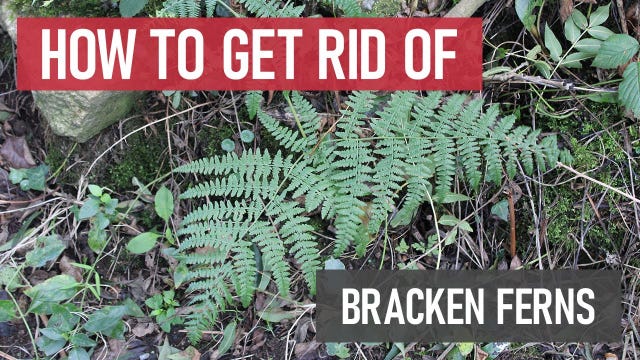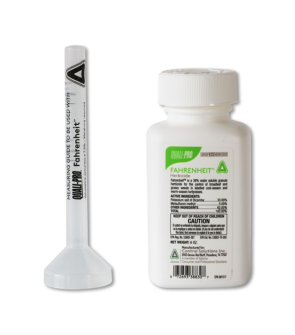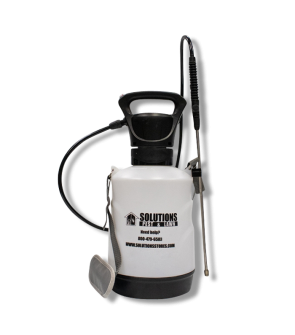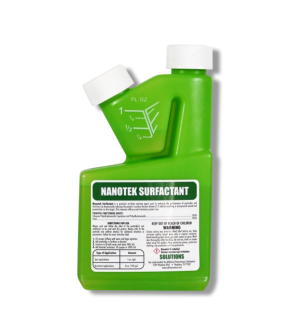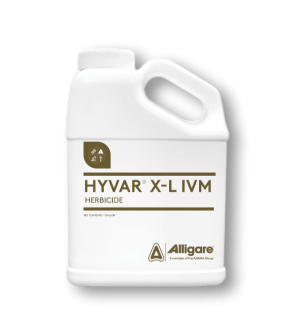Gain access to personalized product screening, the best pricing, rewards, and more!
Most Effective Products
Bracken Fern Control: How to Get Rid of Bracken Fern
This page is a general bracken fern control guide. The suggested products and methods can control bracken fern in your property. Follow this guide and use the recommended products, and you will have 100% control over bracken ferns.
Bracken fern, also known as brackenfern, western brackenfern, bracken, western bracken, or common bracken is a widespread and hardy fern found in the United States and United Kingdom. This fast-spreading perennial fern thrives in many environments and is incredibly hard to control.
It spreads rapidly through underground rhizomes, forming dense stands that crowd out native plants, leading to thin, discolored, or dead desirable foliage. Another major concern with bracken fern is its toxicity to people and animals. Grazing animals that ingest this foliage risk poisoning, which can lead to illness or death.
While bracken fern is not toxic by touch alone for people, handling it can sometimes trigger allergic reactions in some individuals. The biggest concern for people comes from eating the fern or drinking milk from animals that have grazed on it, as the toxins can be passed on.
Getting rid of bracken ferns can be challenging because they spread aggressively through underground rhizomes, but with persistence and the right treatment plan, as suggested in our DIY guide, they can be controlled.
Identification
Before you can proceed with a treatment program, you must be sure that your foliage is indeed bracken fern. Misidentification can lead you to use the wrong treatment products and waste time and money. Below are some characteristics of bracken fern to aid in identification:

- Bracken fern is a large, coarse fern known for its triangular fronds and firm upright structure. It typically grows 1.5 to 7 feet tall. Stalks are sent up from rhizomes, which then branch into fronds, or leaves. One triangular-shaped structure growing from the stalk is considered one “leaf.” The leaves tend to grow horizontally, and are 1 to 3 feet in length.
- The leaf blades are divided in a feather-like pinnate pattern, with oblong or narrow triangular lobed segments called pinnas. Each pinna grows small leaflets called pinnules. These fronds are held nearly erect or arch back to lie almost parallel to the ground forming dense, horizontal layers of foliage.
- The main stem, or stripe, is brown near the base and covered in short hairs, while the leaf stalks are green. They may turn brown later in the season and have fine, rough hairs.
- Bracken ferns grow from long, creeping, thick rhizomes buried deep in the soil. These rhizomes can grow 11.5 feet deep in the dirt. The rhizome is typically about 5 millimeters (0.2 inches) in diameter, yet it can extend horizontally up to 15 meters (nearly 50 feet) in length.
- In early spring, new growths called fiddleheads emerge from the soil. These fiddleads will have brown stems covered in silvery-gray hairs, and even before the leaves unfurl, the three-part division of leaves are visible. Each frond typically ends in a whorl of three large, triangular leaflets.
- Bracken fern doesn't have flowers or seeds; it spreads by spores or from underground rhizomes. These spores appear along the edges of the fronds from July through September. These spore clusters are often hidden beneath the rolled margins of the fronds, which act as a protective covering. This structure, known as a false indusium, helps shield the developing spores until they are mature and ready for release. The leaves die back and fall away in the winter.
Use the description above and the images to help you identify bracken fern on your property. If you are having trouble, contact us, and we will assist you in properly identifying your unwanted foliage and offer suggestions.
Inspection
Once you have confirmed that you are dealing with bracken fern, you can proceed to inspection. During this phase, you will pinpoint the areas where the bracken fern is growing and observe the conducive conditions helping the plant to thrive. This will help you in determining where to focus your treatment applications.

Where to Inspect
Bracken ferns are found in a variety of natural and disturbed sites that have well-drained, acidic soils and partial to full sunlight.
It thrives in temperature and subtropical regions worldwide, including boreal, tropical, and mesothermal zones, but it does not occur in extreme environments like hot or cold deserts.
They can be found in open woodlands, forest clearings and edges, hillsides, moorlands, heathlands, clear-cut forests, abandoned fields, pastures, along roadsides or trails, lake shores, burned areas, pine forests, and lawns.
It is rare for this plant to grow in cool-seasoned turf, because bracken fern is sensitive to cooler conditions associated with cool-seasoned grass. You are more likely to find it in warm-seasoned turf.
What to Look For
Unlike many other ferns, bracken fern does not grow in tight clusters but spreads individually across the landscape.
Bracken ferns are often easy to recognize by their large, triangular fronds that grow on a single, sturdy stalk growing directly from the ground.
Young shoots emerge as tightly coiled fiddleheads in the spring, and mature fronds may have brown spore lines on the underside of the pinnules.
Treatment
Before handling any herbicides, be sure to wear the proper personal protective equipment (PPE) as instructed on your product's label for safety during mixing and application.
To kill bracken ferns effectively, herbicides with active ingredients like asulam, glyphosate, triclopyr, metsulfuron, sulfometuron-methyl, dicamba, or chlorsulfuron have shown the best results.
We recommend applying herbicides in late summer when the ferns are fully grown because at this stage, the plants are actively transporting nutrients from the fronds down into their underground rhizomes.
Making applications at this time ensures the chemical is carried all the way to the root system, helping to eliminate the entire bracken fern, including the tough rhizomes.
Step 1: Apply Fahrenheit Herbicide
 A selective herbicide such as Fahrenheit Herbicide is often recommended to control bracken fern while preserving the desirable vegetation growing around it.
A selective herbicide such as Fahrenheit Herbicide is often recommended to control bracken fern while preserving the desirable vegetation growing around it.
Fahrenheit Herbicide is a selective water-dispersable granule herbicide designed to effectively control tough broadleaf and grassy weeds in warm-seasoned turf.
Determine how much Fahrenheit Herbicide to use by measuring the square footage of the treatment area. Find the square footage by measuring the treatment area's length and width in feet, then multiplying them together. For acreage, take the square footage and divide it by one acre (square footage / 43,560 sq. ft. = acres).
You will need to mix this product with water in a handheld pump or backpack sprayer.
The application rate for spot treatments is 0.2 oz. of Fahrenheit Herbicide per 1 gallon of water per 1,000 sq. ft.
To enhance this herbicide's efficancy, mix in a non-ionic surfactant like Nanotek. Nanotek Surfactant is a non-ionic surfactant that improves the adhesion and and penetration of pesticides onto treated surfaces.
Just add 1 fl. oz. of Nanotek Surfactant per 1 gallon of solution.
Fill the sprayer with half the amount of water, add the proper amount of product, and pour in the remaining half of the water. Add the surfactant to the mixture last. Close the tank lid and shake until well-mixed.
Spot treat any bracken ferns you have found during your inspection. Use a fan or cone spray pattern to ensure the top and bottom of leaves are fully coated. Spray the fern to the point of wet, but not runoff.
Avoid applications on days when temperatures are above 85 degrees Fahrenheit.
Do not make applications where the roots of ornamental plants, including shrubs, may extend.
Do not apply to Dichondra lawns or lawns where desirable clovers are present.
A repeat application may be required in 4 to 6 weeks after the first treatment.
Prevention
After removing the bracken fern, take some preventative measures to ensure this foliage does not return to your yard. The preventative techniques you can take are listed below:
- Unfortunately, pre-emergent herbicides won't work for bracken ferns since this plant spreads through underground rhizomes or spores, not just by seed. Most chemicals in pre-emergents are not able to reach the plant's deep underground rhizomes. However, you can reduce the conditions that support its growth by regularly managing your property.
- Since bracken fern thrives in poor, acidic soil and disturbed land, improving soil fertility and maintaining healthy vegetation with regular fertilization can help reduce its spread.
- Regular mowing or cutting young fronds before they unfurl can weaken the plant overtime. It's best to cut the stems at ground level. Cutting in the early summer and again when new growth appears will reduce spore production, helping to prevent spread and new growth.
- We also recommend avoiding disturbing the soil, like plowing or heavy grazing with livestock, which can stimulate the plant to grow. Best to rotate livestock to different fields until the bracken fern is controlled. You can also divide the pasture into sections and move livestock regularly to allow the grass to recover and maintain soil cover.
- Since bracken fern is a perennial plant, multiple applications may be necessary for complete control and prevention. Reapply Fahrenheit Herbicide as new bracken fern appears without exceeding the maximum application rate.
Key Takeaways
What is Bracken Fern?
- Bracken fern is a large, deciduous, perennial plant that spreads through deep underground rhizomes.
How to Get Rid of Bracken Fern
- To get rid of bracken fern, we suggest using Fahrenheit Herbicide.
Preventing Bracken Fern Reinfestation
- Since there are no available pre-emergents on the market for bracken ferns, you will need to manage its growth for prevention. Managing its growth involves improving soil fertility with fertilization, regularly cutting young fronds before they unfurl, avoiding soil disturbance, and rotating livestock. Because bracken fern is perennial, multiple herbicide applications and ongoing monitoring are needed for effective preventative control.






